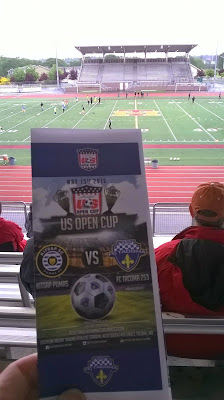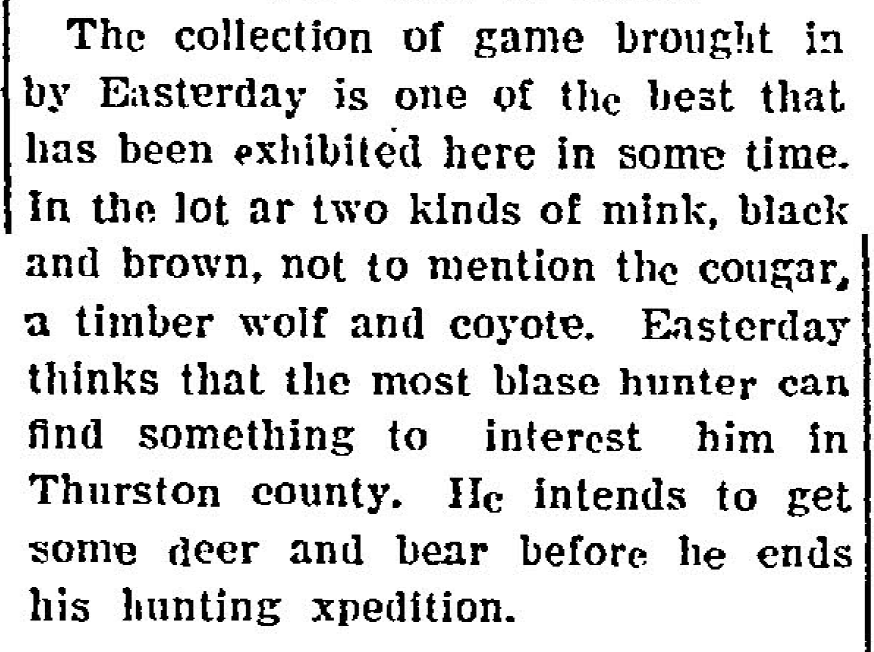In honor of white supremacists being run out of downtown Olympia, I give you an excerpt from Oyster Light, my bookish collection of historical essays about Olympia. Here’s the part about James Riley, who may be the biggest ass who ever lived in Olympia. Much more so than Joseph Bunting, who wasn’t nice either. But, I’m far more ambivalent about Bunting than Riley. Every bad thing we say about Bunting should be said 100 times more about Riley.
Oyster Light is available here for free (or at a cost if that’s your sort of thing) or for $11 in printed form here.
Let’s go back to the Washington Territory and Jim Riley in the summer of 1861. As the rest of the country was lurching into the first summer of the Civil War, Riley was at a low point. Remember, Riley was the actor in the Too-a-pi-ti killing. He put the bullet in Too-a-pi-ti’s back and the pioneer community was learning really how savage Riley could be.
The white community, after years of Riley being “arraigned on charges of drunkenness, disorderly conduct, brutal assault, rape and petit and grand larceny” had had enough.
By August, with a warrant out and the sheriff looking for him, Riley “got everything in readiness for a trip to the mines, with no intention of never (sic) returning to the scene of his many brutal exploits.” The mines were where men like him went to disappear. They were for Riley, and they apparently were for Joseph Bunting a decade later, the place at the edges of society where men like them could still live.
But, before Riley left, he wanted reciprocity. “(He) had determined to revenge himself upon as many as possible of those of our citizens who had in any manner been parties to his repeated arrests and trials.”
Before he was brought in by the sheriff, Riley got one man drunk and bashed his head in with a rock, who somehow survived. In another episode, Reily stabbed an Indian to death. His one last spree lasted as long as it took the sheriff to chase him out of his house and shoot him in his leg during the foot pursuit. The Steilacoom newspaper commented on the number of people disappointed in Sheriff Tucker for not just killing Riley.
Riley in 1861 is the direct result of our history five years before during the Puget Sound War. Removing Indians from downtown Olympia. The murder of Quiemuth and Too-a-pi-ti. These acts when unpunished and the social acceptance gave violent psychopaths like Riley the rope that finally ran out for him in 1861.
A month after being brought in by the Sheriff, Riley gave the South Sound the slip for the last time. He apparently was healed from his gunshot wound, but still used his crutches as a ruse (ever the actor) to put his captures at ease. Then, at a point when his watchers were distracted, he took off into the woods, never to be seen again.
Like Bunting after him, Riley was supposed to end up heading to the mines somewhere. There are also records of a Jim Riley committing murder in King County a few years later, but Riley is pretty much off the historic record after 1861.
As he left, the Steilacoom newspaper noted (again) that most of the local community just wouldn’t mind seeing Riley be killed. They would be “pledged and ready to hang him without ceremony…” because of “…the present absence of anything like law for men like Riley.”
But, not everyone wanted to see Riley hung. The paper ran an editorial over the summer, arguing against the “he only killed an Indian” defense of Riley. The newspaper’s response was not as emotional and full of righteous human rights indignation as you would hope. The writer’s main point was that Indians shouldn’t be killed because their families might kill back. They didn’t want to spark a new Puget Sound War.
But still, by the time Riley disappeared, the paper estimated only 10 percent of the community would save him from hanging. That’s a smaller number still, but well higher than I would assume a serial killer would warrant today.


